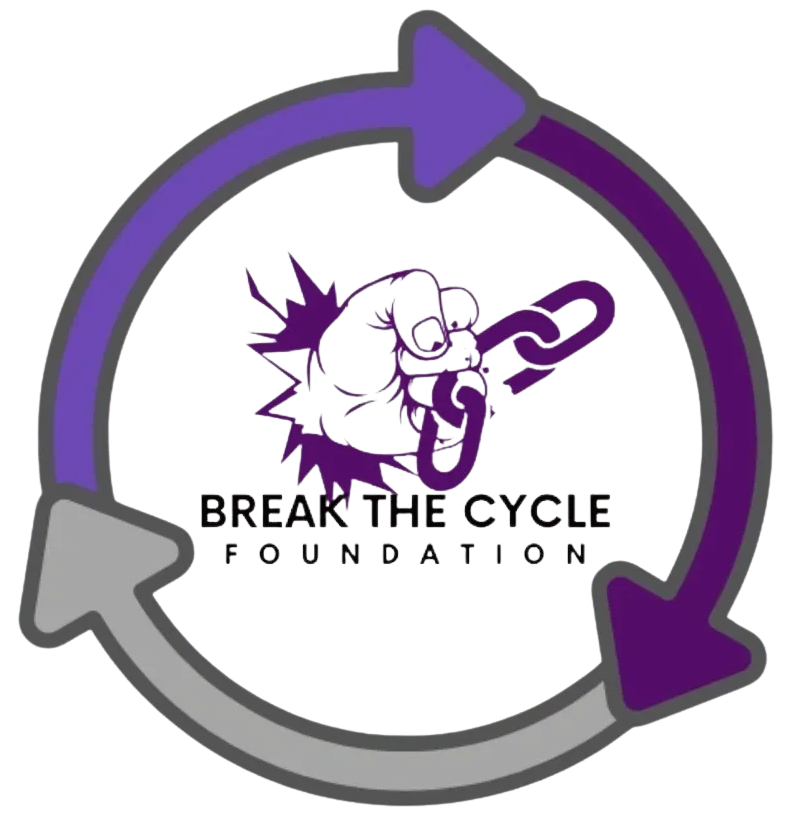Understanding Methadone Treatment
Benefits of Methadone Treatment
When deciding how to know if methadone maintenance is right for you, it’s essential to consider the benefits that methadone treatment offers for opioid use disorder.
-
Reduction in Opiate Use: Methadone helps replace the use of other opiates, such as heroin, by creating a less intense high and reducing cravings. This makes it especially beneficial for those who struggle with heavy opioid use (Relapse Prevention Planning).
-
Withdrawal Management: Methadone is a safe way to avoid the severe withdrawal symptoms associated with opiate detoxification. It helps postpone withdrawal symptoms without causing the same problems that other opiates might (Methadone Effects and Administration).
-
Structured Routine: Methadone treatment typically involves daily administration in a single dose. This structure adds accountability to the recovery process, helping individuals maintain a routine that can support their journey to sobriety.
| Benefit | Description |
|---|---|
| Reduction in Opiate Use | Methadone creates a less intense high and reduces cravings. |
| Withdrawal Management | Safely postpones withdrawal symptoms. |
| Structured Routine | Administered daily, adding accountability. |
Drawbacks of Methadone Treatment
While methadone treatment has significant benefits, it’s also important to be aware of its drawbacks Understanding the Intake and Assessment Process.
-
Side Effects: Methadone can cause unpleasant side effects such as respiratory problems and dental issues. These side effects can impact daily life and hinder activities such as driving or working.
-
Addictiveness: Methadone itself is addictive. Although it can be a useful tool in curbing heroin addiction, it does not entirely break the cycle of addiction. This necessitates close monitoring and a comprehensive approach to recovery.
-
Withdrawal Difficulty: Methadone withdrawal can be harder and longer than withdrawal from other opioids. This emphasizes the need for caution and professional guidance during treatment (Individual Counseling for Addiction).
| Drawback | Description |
|---|---|
| Side Effects | Can cause respiratory problems and dental issues. |
| Addictiveness | Methadone itself is addictive. |
| Withdrawal Difficulty | Harder and longer than other opioids. |
To ensure a well-rounded approach to addiction treatment, it’s crucial to consider both the benefits and drawbacks of methadone treatment. Combining methadone maintenance with group therapy, individual counseling, and other support structures can greatly enhance the chances of a successful recovery journey.
Methadone Administration and Safety
Structure and Routine of Methadone Treatment
Methadone treatment provides structure and routine, an essential component for individuals grappling with opioid use disorder. It is typically administered daily in a single dose, often at a clinic or treatment center, which adds a layer of accountability to the recovery process. This routine ensures that patients follow a regimented schedule, helping them develop healthier habits and a sense of stability.
To learn more about the overall benefits of methadone in opioid treatment programs, visit our page on the benefits of methadone in opioid treatment programs.
Methadone Dosage and Duration
The dosage and duration of methadone treatment are critical factors in determining its effectiveness. Dosages are personalized based on the individual needs of each patient, with the ultimate goal being to alleviate withdrawal symptoms and cravings without causing euphoria or sedation.
Research indicates that patients receiving doses higher than 60mg per day are less likely to use or inject drugs compared to those receiving lower doses (NCBI Bookshelf). The duration of treatment is also an important consideration, with a recommended minimum of 12 months (SAMHSA). Some patients may require long-term maintenance, which can extend for several years, to sustain recovery and prevent relapse.
The dosage of methadone typically falls in the following range:
| Dosage (mg) | Purpose |
|---|---|
| 20-40 | Initial doses to attenuate withdrawal |
| 60-120 | Maintenance doses to prevent cravings and use |
For more on understanding the intake and assessment process in methadone treatment, refer to our article on understanding the intake and assessment process.
Monitoring and adjusting doses based on patient response is crucial. Medical professionals aim to reach a maintenance dose that is effective for at least 24 hours, ensuring that the patient does not experience withdrawal symptoms or cravings throughout the day. It’s important to discuss any concerns about dosage and duration with your healthcare provider to tailor the treatment to your specific needs.
For further information about safely managing methadone treatment and other related subjects, explore our various resources, such as individual counseling for addiction and how structured counseling helps break the cycle of addiction.
Methadone for Opioid Use Disorder
When considering methadone for Opioid Use Disorder (OUD), understanding its effects and administration is crucial. Methadone has been approved by the Food and Drug Administration (FDA) to treat OUD and manage pain, helping individuals reclaim active lives.
Methadone Effects and Administration
Methadone is a long-acting opioid agonist that operates by binding to the same receptors in the brain as other opioids, such as heroin or prescription pain medications. This action blocks the euphoric effects of these drugs and helps reduce cravings and withdrawal symptoms, assisting in creating a stable environment for recovery (SAMHSA).
The administration of methadone should be a component of a comprehensive treatment plan that includes counseling and behavioral therapies. Methadone solutions come in various forms, including liquid, powder, and diskette, which can be administered orally once a day.
Methadone Administration – Table Example
| Methadone Form | Administration Method | Frequency |
|---|---|---|
| Liquid | Oral | Once Daily |
| Powder | Oral | Once Daily |
| Diskette | Oral | Once Daily |
An important aspect of methadone treatment is the supervised administration, especially in the initial phases. Regular attendance at an Opioid Treatment Program (OTP) ensures that dosages are adjusted correctly based on individual response and progress. For some patients, unsupervised take-home doses may be granted, increasing treatment engagement and satisfaction (SAMHSA).
Safety Measures with Methadone
To ensure safety, methadone must be taken precisely as prescribed and tailored to the individual’s needs. Patients should never share their medication, and it’s vital to provide healthcare providers with a complete health history to avoid potential interactions, especially with medications that could cause heart conditions or lead to unintentional overdose (SAMHSA).
Safety Tips and Considerations
- Complete Health History: Disclose all medications and health conditions.
- Adhere to Prescription: Take as directed by a healthcare provider.
- Store Safely: Keep medication in a secure location to prevent misuse.
The benefit of methadone hinges on transparency and adherence to safety protocols. Patients must have a dialogue with their healthcare providers about any substance use, as combining substances can increase the risk of overdose. Providers should engage in honest communication about the risks and ensure access to naloxone to mitigate overdose risks.
For more on the benefits of methadone in opioid treatment programs, visit our related article on the benefits of methadone in opioid treatment programs. Understanding these measures and exploring treatment options with your care team can provide the necessary foundation for recovery. For tips on setting goals, see our page on setting realistic recovery goals with your care team.
Methadone Treatment Considerations
Understanding the considerations of methadone treatment is essential in deciding how to know if methadone maintenance is right for you.
Methadone in Pregnancy and Breastfeeding
Methadone is a viable option for pregnant or breastfeeding women dealing with Opioid Use Disorder (OUD). According to SAMHSA, methadone, when combined with prenatal care, can significantly reduce withdrawal symptoms and health risks for both mother and baby. Methadone provides a safer alternative compared to continuing opioid use during pregnancy, helping to stabilize the mother’s condition.
| Consideration | Benefits |
|---|---|
| Pregnant Women | Prevents withdrawal symptoms, reduces health risks for mother and baby |
| Breastfeeding Women | Safe under supervision, ensures continuity of OUD treatment |
For more information on the benefits of methadone use in opioid treatment programs, refer to our detailed guide on the benefits of methadone in opioid treatment programs.
Methadone Maintenance Therapy (MMT)
Methadone Maintenance Therapy (MMT) is designed to assist individuals in overcoming the challenges associated with opioid addiction. MMT involves the daily administration of methadone, under clinical supervision, to manage withdrawal symptoms and reduce cravings. This structured approach allows individuals to maintain a stable life and focus on recovery.
Criteria for Unsupervised Dosing
SAMHSA outlines specific conditions under which methadone can be administered unsupervised:
- Clinical judgment supporting stability
- Absence of active substance use disorders
- Regular attendance at supervised medication administration sessions
- No serious behavioral problems
- No recent diversion activities
- Safe transport and storage of medication
| Criteria | Importance |
|---|---|
| Clinical Judgment | Ensures stability |
| Regular Attendance | Indicates commitment |
| No Serious Behavioral Issues | Minimizes risks |
| Safe Medication Storage | Prevents misuse |
Unsupervised dosing allows patients to manage their treatment conveniently, promoting adherence and long-term success. For a comprehensive understanding of what to expect during methadone treatment, read more about individual counseling for addiction.
Methadone Maintenance Therapy aims to provide a balanced approach to recovery. Engaging in structured counseling and group therapy sessions can significantly enhance the effectiveness of MMT, fostering long-term sobriety and quality of life. Explore how structured counseling helps break the cycle of addiction and other supportive strategies.
Methadone Maintenance and Recovery
Goal of Methadone Treatment
The objective of methadone maintenance treatment (MMT) is to stabilize the patient by preventing withdrawal symptoms, reducing cravings, and blocking the euphoric effects of illicit opioids (American Family Physician). This aids in managing chronic medical and psychiatric conditions as patients achieve stable dosing levels. MMT is part of a comprehensive approach to addiction treatment, which may also include individual counseling for addiction and group therapy for substance use.
Long-Term Effects of Methadone
Methadone maintenance therapy has several long-term benefits for individuals struggling with opioid dependency:
- Patients receiving methadone doses of over 60 mg per day show a significant reduction in drug use and injection behaviors compared to those on lower doses (NCBI Bookshelf).
- Continuation in MMT enhances outcomes, as prolonged treatment correlates with improved stability and reduced risk of relapse (NCBI Bookshelf).
- For individuals in closed settings, ongoing MMT post-release leads to lower rates of relapse and resumed illicit drug use, demonstrating the importance of consistent and extended treatment (NCBI Bookshelf).
- MMT, whether provided in specialized clinics or general medical practices, proves to be effective and flexible, expanding access to addiction services when administered by trained professionals.
To understand various aspects of methadone treatment and how it might fit into your recovery journey, you can explore articles like what is substance use disorder and how is it treated and setting realistic recovery goals with your care team. For those considering MMT during pregnancy or while breastfeeding, consult our section on Methadone in Pregnancy and Breastfeeding for more targeted information.
Enhanced Methadone Treatment Guidance
SAMHSA Recommendations
The Substance Abuse and Mental Health Services Administration (SAMHSA) has laid out specific recommendations to enhance the guidance around methadone treatment. Their updated guidelines have played a significant role in shaping the process of methadone maintenance therapy (MMT) and opioid use disorder treatments.
SAMHSA has observed that allowing Opioid Treatment Programs (OTPs) to provide unsupervised take-home doses of methadone has led to increased engagement in treatment and enhanced patient satisfaction with relatively few incidents of misuse or medication diversion. This recommendation is crucial for patients looking for flexibility in their treatment while abiding by safety protocols. For more details on how methadone benefits opioid treatment programs, visit our section on the benefits of methadone in opioid treatment programs.
Methadone Take-Home Flexibilities Extension
In November 2021, SAMHSA issued the Methadone Take-Home Flexibilities Extension Guidance and updated it in April 2023. This guidance allows an exemption from the unsupervised take-home medication requirements, effective upon the expiration of the COVID-19 Public Health Emergency and lasting for one year thereafter or until final rules revising 42 C.F.R part 8 are published. This extension provides OTPs with the flexibility to give up to 28 days of take-home doses to stable patients and up to 14 days to less stable patients, depending upon the clinical judgment of the provider and the patient’s ability to manage the medication safely.
The primary criteria for determining patient eligibility for unsupervised methadone doses include:
- Absence of active substance use disorders that increase the risk of patient harm or overdose.
- Regular attendance for supervised medication administration.
- Absence of serious behavioral issues.
- Absence of recent diversion activity.
- Ability to safely store and transport medication.
These guidelines were designed to facilitate increased treatment engagement and improve patient satisfaction, evidenced by relatively few incidents of misuse or diversion during the significant rise in fentanyl-related overdose mortality.
| Criteria for Take-Home Methadone | Details |
|---|---|
| Absence of active substance use disorders | Ensures patient safety |
| Regular attendance | Demonstrates commitment |
| No serious behavioral problems | Builds trust |
| No recent diversion activity | Ensures medication is used properly |
| Ability to safely store and transport | Prevents misuse |
The objective of these exemptions is to support recovery processes by removing barriers to care while ensuring a safe and effective treatment pathway. Clinicians are also advised to consider the presence of any additional substance use, which could affect overdose risk. It is recommended to engage in honest dialogue with patients regarding the dangers of substance use, provide interventions if needed, and ensure access to naloxone.
Documentation of the decision-making process for approving or continuing a patient’s take-home medication must be recorded in the patient’s medical record to maintain a clear treatment plan.
To learn more about necessary steps during your recovery journey, including individual counseling for addiction and group therapy, visit our related articles.







